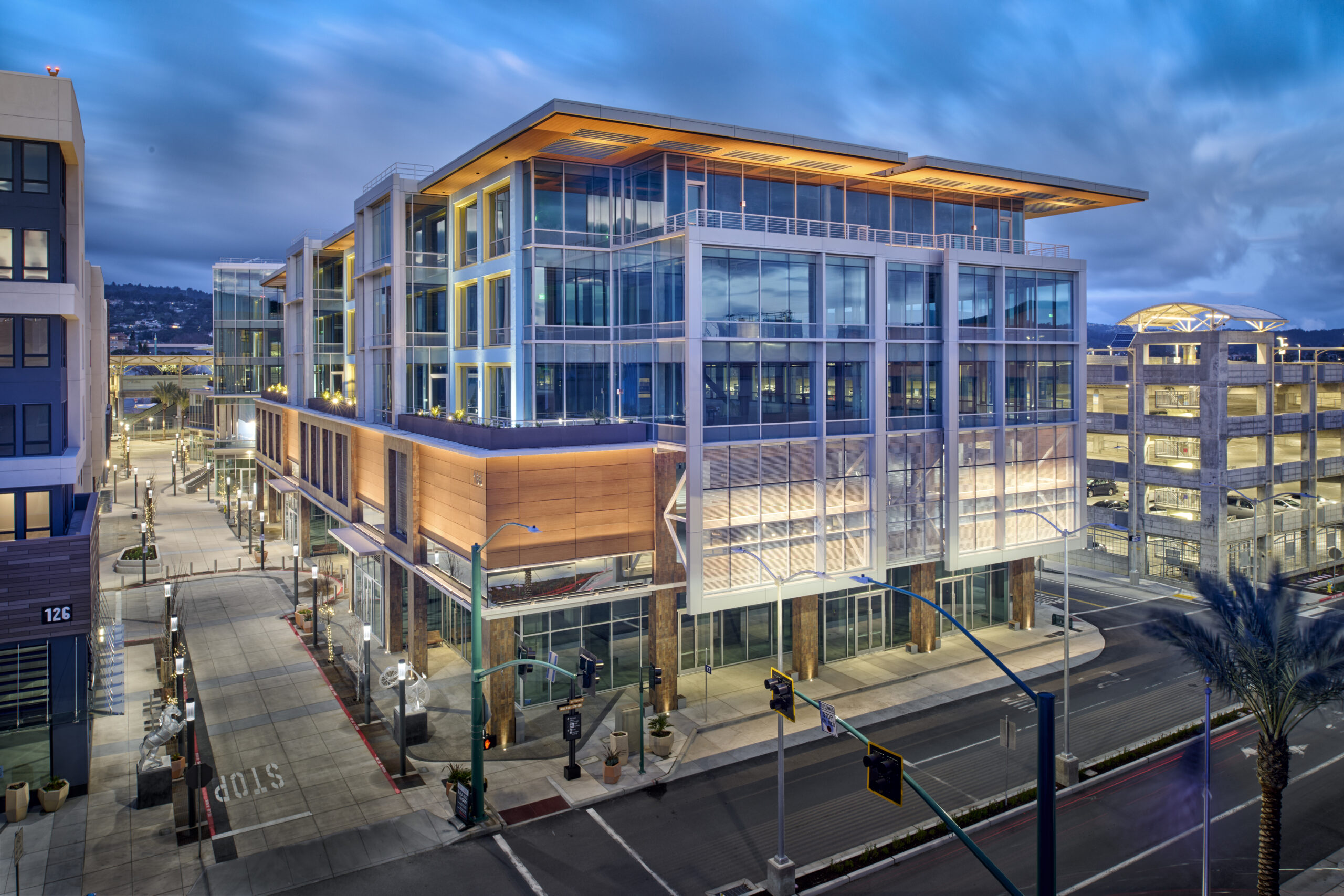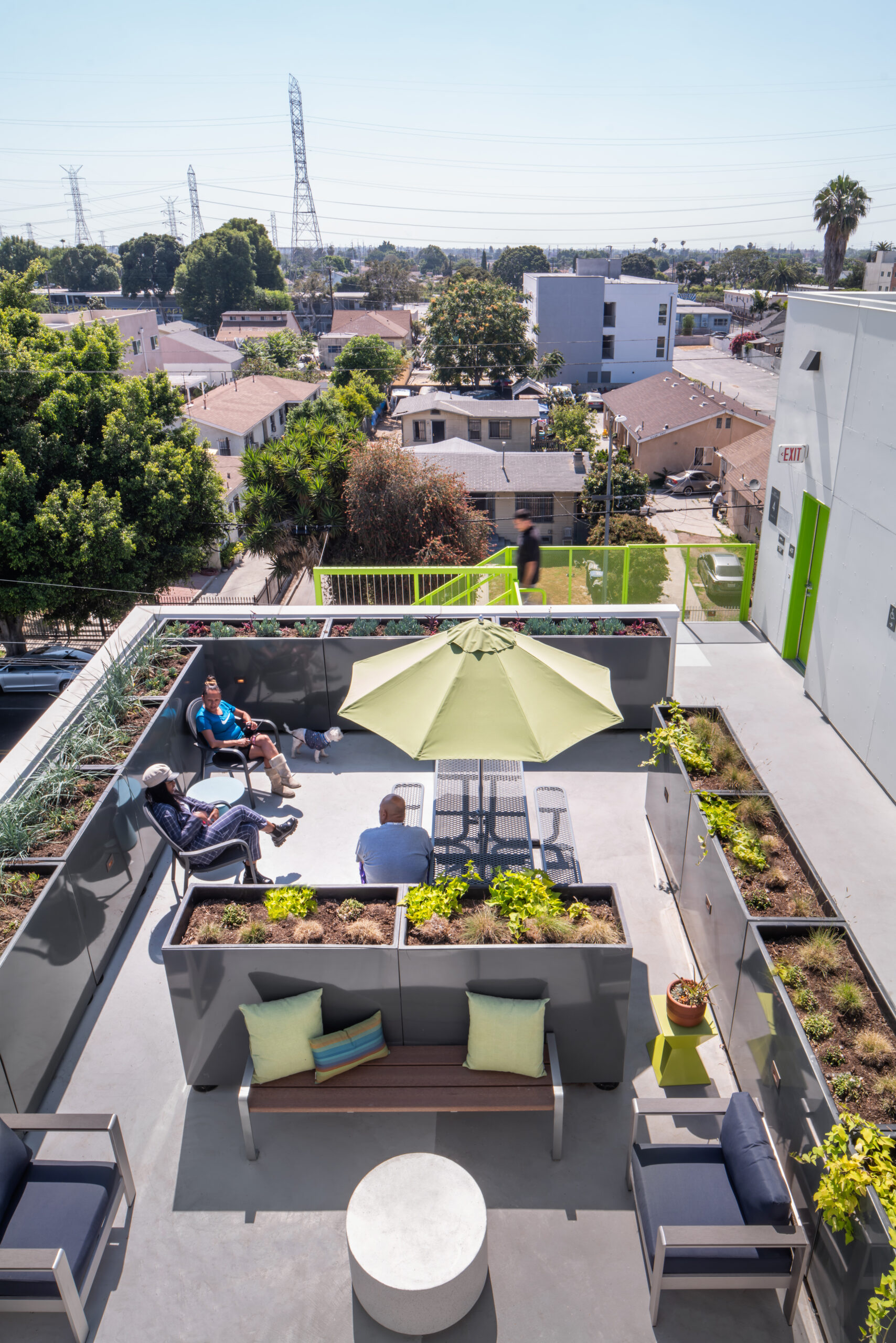Surfacedesign Pairs California Wineries With Curated Grounds

Surfacedesign specializes in creating inspiring outdoor tasting environments for wineries. Left to right: Native plantings seamlessly connect Odette Estate Winery to the rolling Napa Valley hills, Faust Wines’ botanical palette was inspired by Goethe’s book Theory of Colours, and Kistler Vineyards’ terrace has a planned patchwork of grass and pavers. Photos: Marion Brenner. Click here for high-resolution images.
SAN FRANCISCO: Award-winning landscape architecture firm Surfacedesign specializes in creating colorful, inviting outdoor experiences for wineries. “The grounds are metaphorically a winery’s welcome mat,” says Roderick Wyllie, ASLA, Surfacedesign Co-Founding Partner. “We work with vintners to amplify their tasting experiences, enhance the distinctive building architecture common to wineries’ estates, and create memorable outdoor spaces for special events and everyday visitors.” Landscape materials are selected to minimize environmental impact while providing flexible visitor environments for outdoor wine-tasting and events. Surfacedesign received its first winery commission in 2011, and its portfolio in the typology continues to grow
Faust (2020)
St. Helena, CA
To further elevate its place in California winemaking, Faust engaged Surfacedesign to create a series of unique outdoor experiences and “garden rooms” on par with the vintner’s iconoclastic red wines. Faust writer Johann Wolfgang von Goethe’s book Theory of Colours influenced the non-traditional landscape approach—a rich, multi-hued gradient punctuated by strategic shade from mature canopy trees.
An ombre color palette transitions the understory planting from reds to whites as Faust’s visitors journey through the gardens. The Entry Garden creates a memorable first impression with its vibrant red foliage. As guests progress up a hill, the vegetation shifts to from a red to orange palette, then orange to yellow. The journey culminates as yellows fade to whites at Faust Haus, contrasting the 1878 Victorian’s dark façade with bright, delicate hues. Guests are encouraged to wander through Faust’s distinct garden rooms, including the Speakeasy Garden with yellow-orange plantings, the elm-shaded Victorian Garden with movable furniture for winery views from various angles, and the red-orange-accented Tasting Garden bordering the estate’s main plaza. A Grassy Knoll doubles as a hillside amphitheater, featuring reclaimed granite slabs embedded in the hill to provide informal seating under shade from four mature olive trees that were relocated from an on-site grove. The random patchwork of existing shrubs and understory plants was replaced across the site, bringing a cohesive vision that embraces both the new and existing landscape terraces. Surfacedesign specified materials that matched the existing palette, such as Sonoma fieldstone boulders and timber steps. The use of reclaimed stone and simple materials gives the impression that the new landscape has always existed as part of the surrounding site. With no strict procession of paths, Faust’s visitors are continually rewarded with a rich sense of discovery as they wander through the property for a truly soulful experience.
Stewart Cellars (2015)
Yountville, CA
The seamless landscape at Stewart Cellars responds to the winery’s design challenge to integrate influences from the Stewart family’s Scottish heritage while blending the new facility into Yountville’s historic commercial district. The hospitality-focused approach instills a British country-home ambiance in the winery’s downtown location.
The property’s centerpiece is a mature oak tree at the entrance to the winery that is nestled into the fabric of the city. To take advantage of the tree’s shade while respecting a protection zone for its delicate root structure, Surfacedesign worked with an arborist to locate permanent hardscape away from the oak. Three buildings anchor the property: the Tasting Hall, the sidewalk-accessible Southside Café, and a library for private tastings. Surfacedesign’s landscape solution created a central courtyard for seamless wandering among buildings. Movable courtyard furnishings allow guests to customize their spaces, encouraging outdoor dining and tastings—including under the oak’s canopy on decorative Monterey Gold gravel. Courtyard pavement elements are subtle yet striking. Varying patterns and sizes of sandblasted Tamarack Flack pavers add depth and visual interest and blend with the buildings’ façades. Planted trees include native cypresses to soften transitions between the buildings and courtyard, which is shaded by Meyer lemon trees in movable Atelier Vierkant-designed planters. Stewart Cellars’ 22,500-square-foot grounds successfully blur the line between indoors and outdoors, infusing a bucolic family feeling into downtown Northern California wine-tasting and dining.
Kistler Vineyards (2014)
Forestville, CA
In 2010, Kistler Vineyards purchased 60 acres in Sonoma County to supplement its mail-order business and appeal to a younger clientele with on-site tastings. The winery engaged Surfacedesign to envision welcoming outdoor spaces on the acre of property surrounding Trenton Roadhouse, the vineyard’s main building.
The Kistler experience begins at the Surfacedesign-conceived architectural tube-steel gate, which foreshadows the grounds’ clean, modern aesthetic. Next, the landscape design welcomes visitors to the property via a fountain/reflecting pond inspired by old water troughs. Tastings are hosted inside Trenton Roadhouse, and Surfacedesign activated adjacent outdoor spaces to encourage lingering. Highlights of the Main Terrace design include a custom fire pit and methodically composed patchwork of tiles and grass. For the Dining Terrace, a pergola was created using expanded-steel trellises, which double as outdoor frames for views of the vineyard and Russian River Valley in the distance. Surfacedesign connected these exterior “rooms” with an ADA-friendly winery walk constructed from limestone hardscape and Yosemite Tan decomposed granite. It winds through the three terraces, into stepped rose and edible gardens, and down to a century-old farmhouse. Except for the rose and edible gardens, Surfacedesign used a drought-tolerant planting palette that includes Cleveland sage, feather reed grass, and purple coneflower. These colors and textures create bespoke, intimate grounds—a natural complement to Kistler’s celebrated chardonnays and pinot noirs.
Odette Estate Winery (2014)
Napa, CA
Tucked into a hillside in Napa’s historic Stags’ Leap District, the 64-acre Odette Estate Winery was one of the region’s first to grow cabernet sauvignon grapes. When PlumpJack Group acquired the estate in 2012, the existing winery building was remodeled into a hospitality center. Other modernizations included replanting the vineyards to organic standards and constructing a winery production building. Surfacedesign’s 3.8-acre landscape design seamlessly connects the winery to Napa Valley’s signature rolling topography by restoring a hillside with native fescue and Blando brome grasses, along with ground cover of Hykon rose clover and Red Rocks penstemon.
PlumpJack’s ambitious sustainability goals—culminating in LEED Gold and California Certified Organic Farmers certifications—prioritized aesthetics and cost-effectiveness in addition to environmental friendliness. The Odette visitor experience begins at a parking lot, conceived of as a garden and constructed from permeable gravel paving. Reclaimed stone slabs serve as tire stops and flank a lush rain garden between parking rows, planted with mimosa trees and native grasses. Runoff is channeled into this garden, providing natural irrigation. The hospitality center’s quaint tasting patio is shaded by katsuras and eastern redbuds, among other planted trees. Surfacedesign’s paramount challenge was creating an 8,500-square-foot green roof around 2,400 square feet of solar panels on Odette’s winery production facility. The landscape architects used computer design and foam mock-ups to create the structural forms for the building’s complex, gently domed roof. Stonecrop succulent seeds were planted in mounds on the roof to mimic the region’s ridged topography. To connect Odette’s tasting area to the production building, Surfacedesign created a scenic vineyard path made from Yosemite Tan gravel accented by bands of Belgian cobble and native plantings of sage, muhly grasses, and bush anemone. The path forms a natural connection between the old and the new at Odette.
Buena Vista Winery (2011-2015)
Sonoma, CA
Founded in 1857 by the self-proclaimed “Count of Buena Vista,” the eccentric Hungarian winemaker Agoston Haraszthy de Mokesa, Buena Vista is California’s oldest commercial winery. In 2011, after multiple changes of ownership and decades of neglect, Buena Vista was acquired by Boisset Collection.
To celebrate “The Count’s” 200th birthday, Buena Vista proprietor Jean-Charles Boisset undertook a complete restoration of the property’s historic stone buildings and grounds, which sit at the foot of a forested Sonoma hillside. The design goals: revive Buena Vista’s former grandiosity and energy while adding modern whimsical touches. Surfacedesign’s cohesive outdoor experience begins with a dramatic “garden of delights” at the arrival sequence. Starting at the parking area, a path weaves through the site, bordering a demonstration vineyard that presents the horticultural history of Buena Vista. Playfully engaging elements include a hedge maze set under the shade of heritage oak trees that allows visitors to wander and escape the Sonoma summer heat. Retaining walls of reclaimed Belgian stone create a series of terraces and outdoor rooms connecting the Press House to the Cellar Building. A new forecourt of intricately patterned cobble is an elegant counterpoint to the masonry of the winery buildings. The cobbles’ circular elements and the plaza’s focal point—a vortex fountain—evoke Boisset’s interest in celestial influences. Adjacent to the plaza, Surfacedesign created a performance space/outdoor theater with terraced seating where the local Shakespeare company performs. Buena Vista is listed on the National Register of Historic Places.
Raymond Vineyards (In Progress)
St. Helena, CA
Part of a long-term partnership between Surfacedesign and the Boisset Collection of wineries, Raymond Vineyards’ landscape design integrates the vintner’s biodynamic approach to winemaking, which considers the working winery as a self-sustaining ecosystem that eschews synthetic fertilizers.
Surfacedesign’s masterplan for four acres of Raymond’s public space focuses on the entry experience and captures a celestial aesthetic. The white Yule Marble entry wall with “floating” laser-cut bronze signage introduces this theme to visitors with its inset mosaic of crescent shapes, arranged in a pattern of the moon’s monthly phases. A new entry road on the property is an abstraction of the constellation Leo, paying homage to the belief that biodynamic wine tastes best during “fruit” days, when the moon is in an astrological fire sign (Leo, Aries, or Sagittarius). Geomancy, a method of divination used to organize patterns on the ground, was employed for road location—the client determined the layout by using a pendulum to divine positive-energy areas on the property, where feasible. Where negative energy was detected at road sections that couldn’t be re-routed, Surfacedesign specified white sage plantings for their traditional cleansing properties.
Site furnishings include a series of movable crescent-shaped planter benches that relate to the phases of the moon. Raymond’s plant palette features several silvery-white species, such as white sage and yarrow, to evoke an ethereal essence. Surfacedesign integrated a French vernacular as well, in reference to Boisset’s Burgundian lineage. Examples include grand allées of western sycamore trees and topiary gardens aligning the entry drive. Additional plants, such as chamomile, horsetail, and valerian, were selected for their positive contributions to the soil’s microbiome. Surfacedesign also collaborated on future plans for Raymond’s “Theater of Nature,” an educational outdoor experience that demonstrates the winery’s symbiosis with the natural world.
About Surfacedesign
San Francisco-based Surfacedesign, Inc., is an award-winning landscape architecture and urban design firm that creates dynamic parks, plazas, waterfronts, civic landscapes, and private gardens. Partners James A. Lord, FASLA, Roderick Wyllie, ASLA, and Geoff di Girolamo, ASLA, Assoc. AIA, in collaboration with a multidisciplinary team of landscape architects, urban designers, and architects, provide innovative design solutions for a wide range of projects, working directly with institutions, architects, community groups, and city agencies. Winner of the 2017 National Design Award for Landscape Architecture (given by Cooper Hewitt, Smithsonian Design Museum), Surfacedesign focuses on cultivating a sense of connection to the built and natural worlds, pushing people to engage with the landscape in new ways. The firm’s work is the subject of Material Landscapes, a monograph published by The Monacelli Press (2019).



